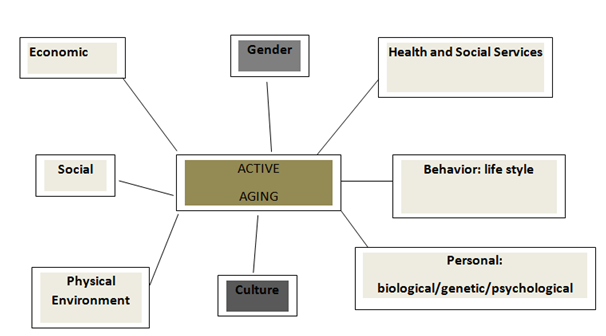MOJ
eISSN: 2574-8130


Mini Review Volume 3 Issue 6
1National Department of Distance Education, Estácio de Sá University, Brazil
2Faculty of Health Sciences, Intitute of Guarda, Guarda, Portugal
3Postgraduation Department, European University of the Atlantic, Spain
Correspondence: Caroliny dos Santos Guimarães da Fonseca, Postgraduation Department, European University of the Atlantic, Santander, Spain, Tel 552196481-1391
Received: August 08, 2018 | Published: December 3, 2018
Citation: Saraiva RJ, Gonçalves EMB, Fonseca CSG. Quality of life in the old age how to begin? MOJ Gerontol Ger. 2018;3(6):450-451. DOI: 10.15406/mojgg.2018.03.00164
Aging is a universal biological process, so we can affirm the positive percentage variation of the elderly population, the decrease in population growth resulting from lower birth and fecundity rates due to changes in behavior in the present society, which graphically passes to be represented by an inverted population pyramid.
For this reason, legislators, entities and civil society representatives, as well as social movements, have been engaged in establishing public policies aimed at promoting health and preventing diseases in the aging process, which provide quality of life for the elderly.
Scientifically, its known that aging is associated with the accumulation of molecular and cellular losses, contributing to the decrease of the homeostasis stability capacity. The elderly inactivity can be the trigger of a vicious circle of social isolation, making it lack of vital capacity for simple and daily tasks.
With the intention of responding to these challenges, the "World Report on Aging and Health” (WHO, 2015)1 was established to recommend equally profound changes in the way policies are formulated and health services provided to aging populations.
According to the Report, "There is no more typically old person", because there is a great diversity of characteristics. Some active seniors over 80 years old have levels of physical and mental capacity comparable to that of many 20-year-olds.
These results contributed to the new assistance models, aiming at the health promotion, diseases prevention and the elderly priorities identification, with a view to maintaining or restoring their functional and cognitive capacity and their autonomy to achieve quality of life.
Recent studies around the world show that physical activity positively influences physical health and cognition throughout life. There are determining factors as described in the graph, which directly contribute to the elderly quality of life (Figure 1).

Figure 1 Factors as described in the graph, which directly contribute to the elderly quality of life.
According to Fernandez-Ballesteros,2 the public policies directed to the elderly need to involve four types of components:
Reduce risk factors associated with major diseases and increase factors that favor behavioral health and fitness:
Provide the protective factors of cognitive functioning:
Encourage positive affect, control, and coping skills to deal with stress and problems:
Provide psychosocial functioning and participation:
When doing this therapy, health professionals begin to modify their actions in clinical practice, starting to have competences based on the collaborative relationship with a focus on the resolutiveness of their actions, aiming at reciprocity between involved professionals, elderly and family in the pursuit of pleasure to live well and healthy.
Based on the above, the elderly physical activity practice is based on critical judgment, demonstrating that it is essential to obtain the essence of the phenomenon, through the intersubjectivity of the involved people, the understanding of the experiences meaning, with the intention of fostering the teaching and learning of self-care, aiming at the quality of active life.
More deeply information on the subject can be found in "The Sexuality Interfaces of the Elderly: in the view of health professionals," our most recent book - Ed. Appris. Curitiba. 2017.
None.
The author declares no conflicts of interest.

©2018 Saraiva, et al. This is an open access article distributed under the terms of the, which permits unrestricted use, distribution, and build upon your work non-commercially.